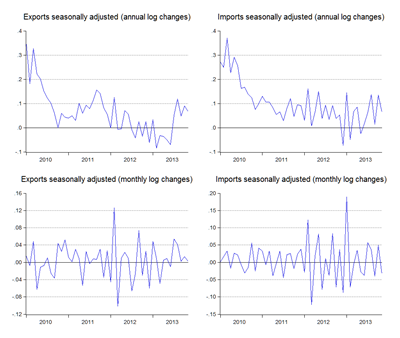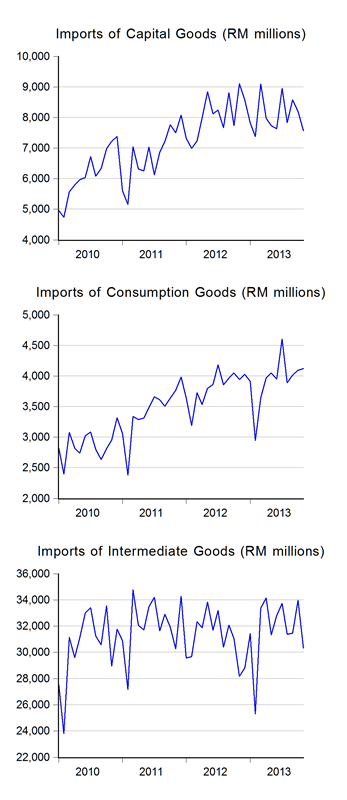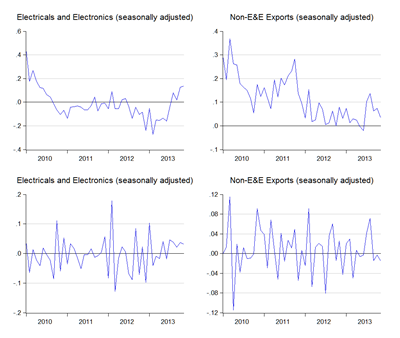If trade growth keeps at this pace, I’d be pretty happy (log annual and monthly changes; seasonally adjusted):
Exports were up 6.7% in annual log terms, although growth was pretty marginal on the month. It’s not all roses – import growth was weaker than I’m comfortable with, since looking at the levels, the apparent growth in the numbers is largely an artefact of weak numbers last year (RM millions):
For those not familiar with the structure of Malaysian trade, much of our exports depend on imported inputs, and weaker/stagnant imports generally signals weaker exports in the months ahead.
Nevertheless, we’re seeing a solid recovery here, especially in the long moribund electrical and electronics sector (log annual and monthly changes; seasonally adjusted):
Growth for the last quarter is looking better by the day.
Technical notes:
November 2013 External Trade report from MATRADE







I am not entirely convinced.
ReplyDeleteHow much of the favourable trade balance is due to the Ringgit having depreciated against the currencies of Malaysia's major trade partners?
If the Ringgit were to appreciate significantly, would we still be running favourable trade balances?
@anon
DeleteBecause exports and imports are not independent in Malaysia (as implicitly assumed under Econ 101), and nor is trade with our major partners dependent on the exchange rate.
Much of Malaysia's trade is not exchange rate sensitive (e.g. E&E) because these goods are part of the regional supply chain where imported inputs are used, and our exports then form imported inputs for other countries. This form of trade is almost exchange rate proof, because input costs are FX denominated, and output revenue is also FX denominated. The exchange rate only matters for domestic value added.
There's a short discussion of this in one of my very first posts:
http://econsmalaysia.blogspot.com/2009/03/that-sinking-feeling.html
But given this structure, higher exports must be equated with higher external demand, not lower prices.
Also for a major portion of our other exports (commodities) the causality runs the other way i.e. commodity prices drive movements in the exchange rate, not the other way around. This is called the terms of trade effect.
Lastly, you might want to wait for my next post, which will be on an update to Malaysia's exchange rate indices.
@anon
DeleteI would also be remiss if I didn't point out that trade numbers are coming up across East Asia.